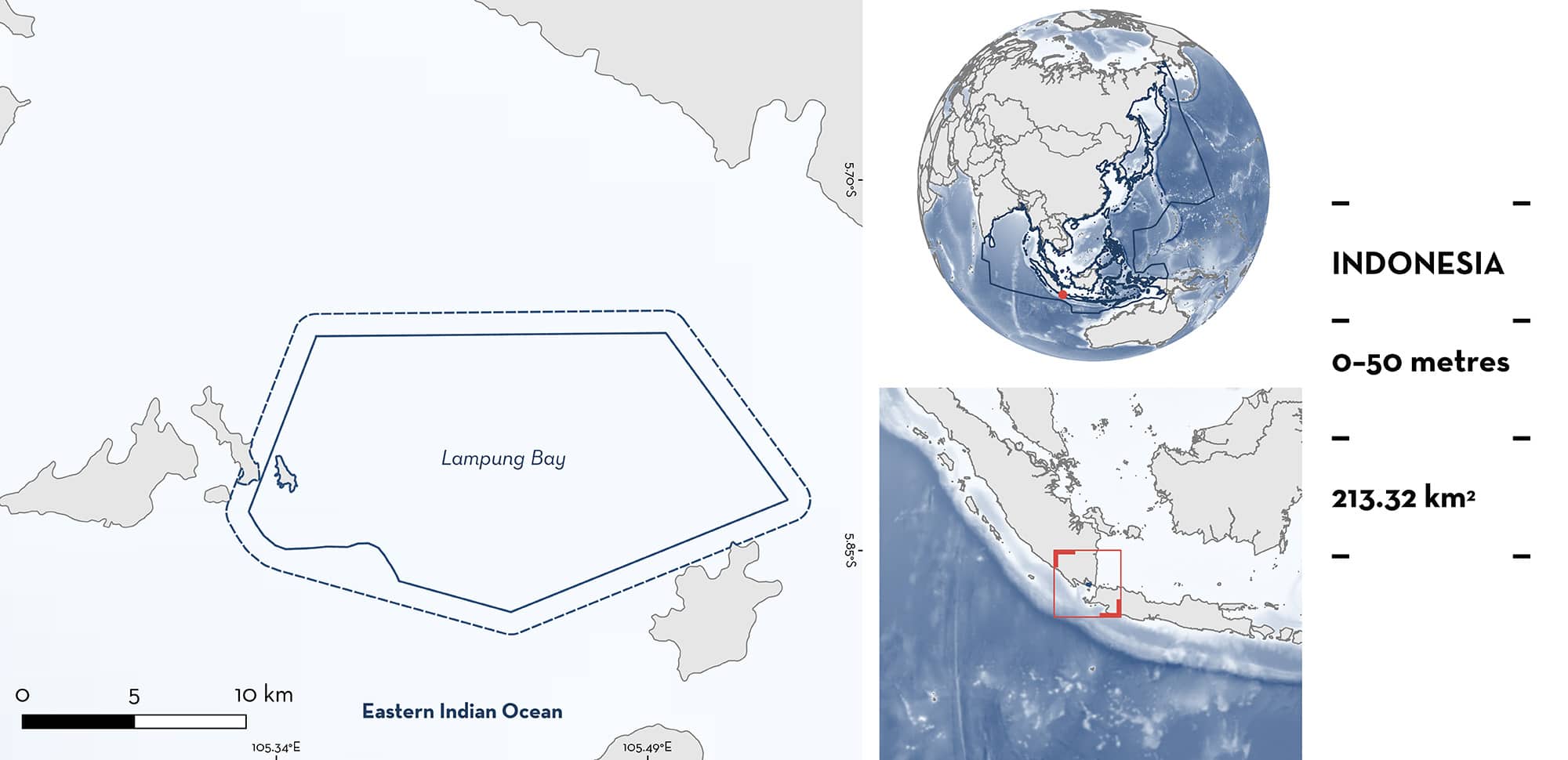ISRA FACTSHEETS
ISRA FACTSHEETS
ASIA REGION
Lampung Bay
Summary
Lampung Bay is situated in the southern part of Sumatra Island, Indonesia. It is adjacent to the Sunda Strait which connects the eastern Indian Ocean and the Java Sea. The area is characterised by seagrass beds, mangroves, and sandy and muddy substrates. Within this area there are: threatened species and reproductive areas (Scalloped Hammerhead Sphyrna lewini).
Download factsheet
Lampung Bay
DESCRIPTION OF HABITAT
Lampung Bay is situated in the southern part of Sumatra Island adjacent to the Sunda Strait, Indonesia. The strait connects the eastern Indian Ocean and the Java Sea, making this area important for sea mass transport and pelagic fish migration (Koropitan et al. 2004; Amri 2008; Widhi et al. 2013; Rahmawati et al. 2016; Tarigan et al. 2021). The key coastal habitats in the area are seagrass beds and mangroves with sandy and muddy substrates in the middle of the bay, where the depth varies between 8–50 m, with an average temperature and salinity of ~29oC and 32 PSU, respectively (Samusamu et al. unpubl. data 2021).
This Important Shark and Ray Area is benthopelagic and is delineated from inshore and surface waters (0 m) to 50 m based on the depth range of Qualifying Species in the area.
CRITERION A
VULNERABILITY
The one Qualifying Species within the area is considered threatened with extinction according to the IUCN Red List of Threatened Species. The Scalloped Hammerhead is assessed as Critically Endangered (Rigby et al. 2019).
CRITERION C
SUB-CRITERION C1 – REPRODUCTIVE AREAS
Lampung Bay is an important reproductive area for one shark species.
Scalloped Hammerhead neonates were recorded in surveys in 2013, 2020, and 2021. A total of 227 neonate and young-of-the-year (YOY) Scalloped Hammerheads measuring between 39–68 cm total length (TL) were observed landed in 2013 from fisheries operating in the area (Parluhutan & Imaniar 2015). These fisheries were also observed landing 301 Scalloped Hammerheads in 2020 (Nugraha et al. 2023), and 472 in 2021 (Samusamu et al. unpubl. data 2021), at sizes between 37.5–70.6 cm TL. These were determined to be neonates and YOY based on a size-at-birth from Indonesian waters of 31–57 cm TL (White et al. 2008) and the presence of open umbilical scars. Young Scalloped Hammerheads were captured mostly in areas characterised by sandy and muddy substrates. Results from these surveys demonstrate the regular and predictable use of this area and how it sustains Scalloped Hammerheads at early life-cycle stages.
Download factsheet
SUBMIT A REQUEST
ISRA SPATIAL LAYER REQUEST
To make a request to download the ISRA Layer in either a GIS compatible Shapefile (.shp) or Google Earth compatible Keyhole Markup Language Zipped file (.kmz) please complete the following form. We will review your request and send the download details to you. We will endeavor to send you the requested files as soon as we can. However, please note that this is not an automated process, and before requests are responded to, they undergo internal review and authorization. As such, requests normally take 5–10 working days to process.
Should you have questions about the data or process, please do not hesitate to contact us.


